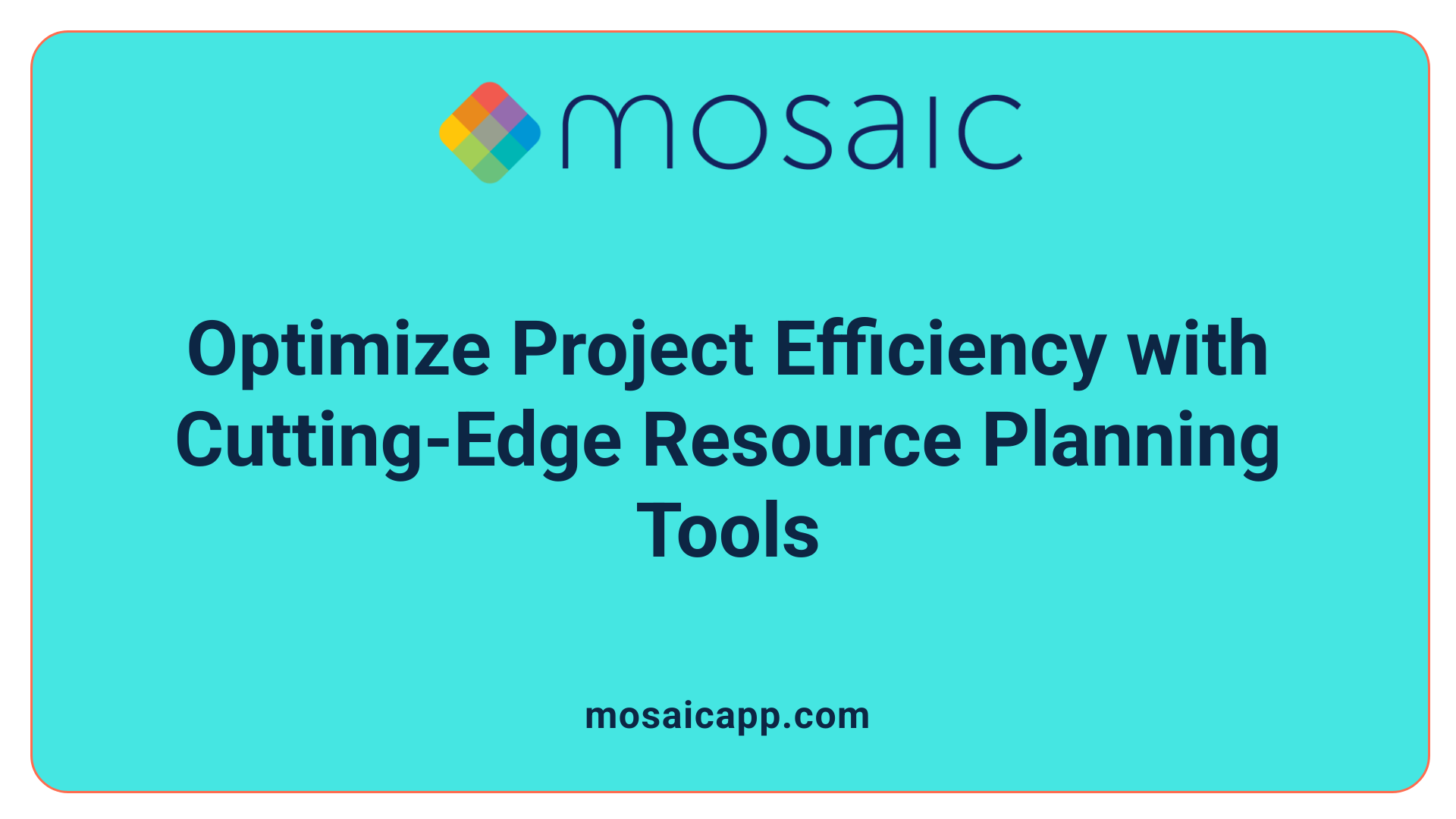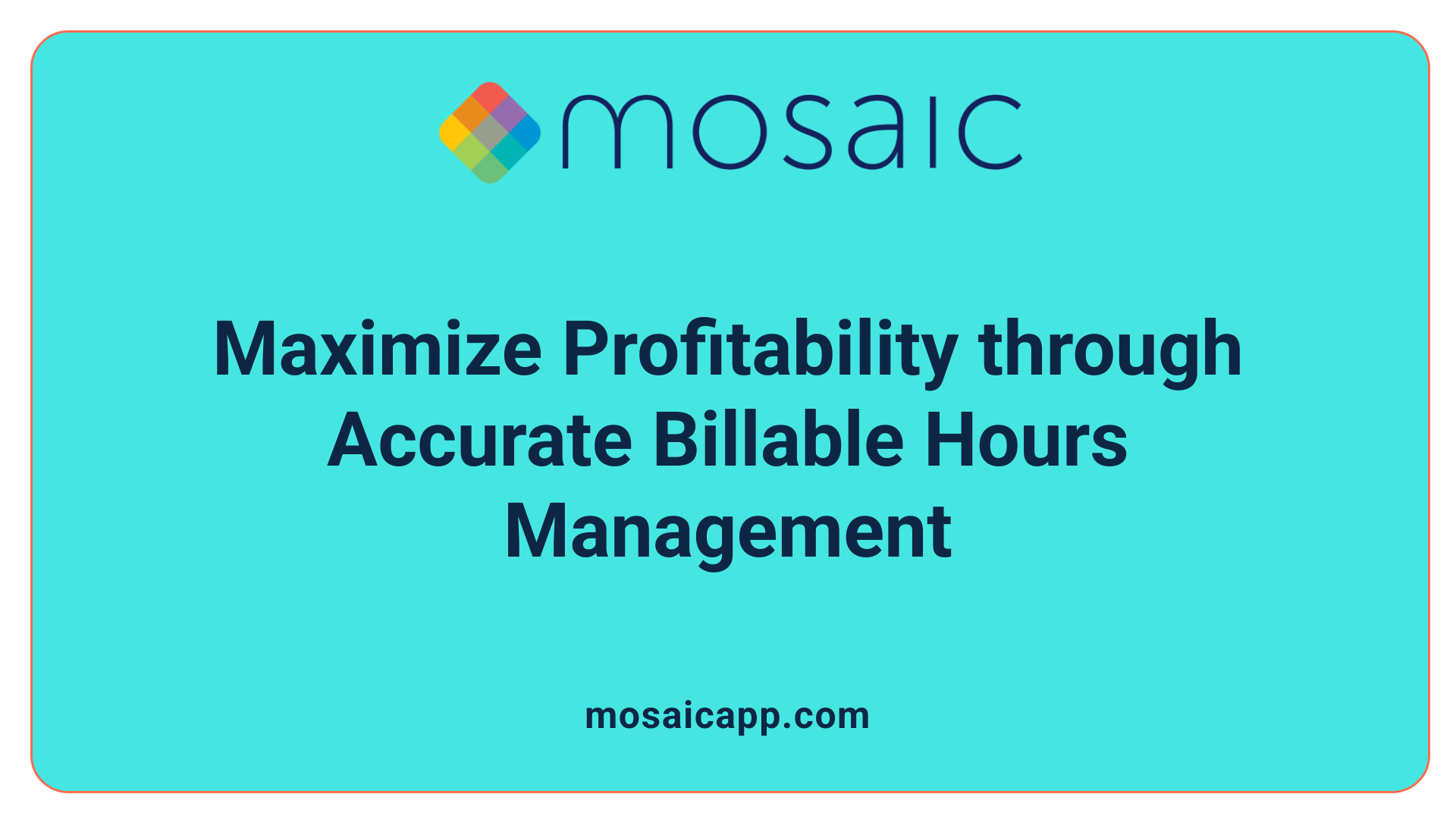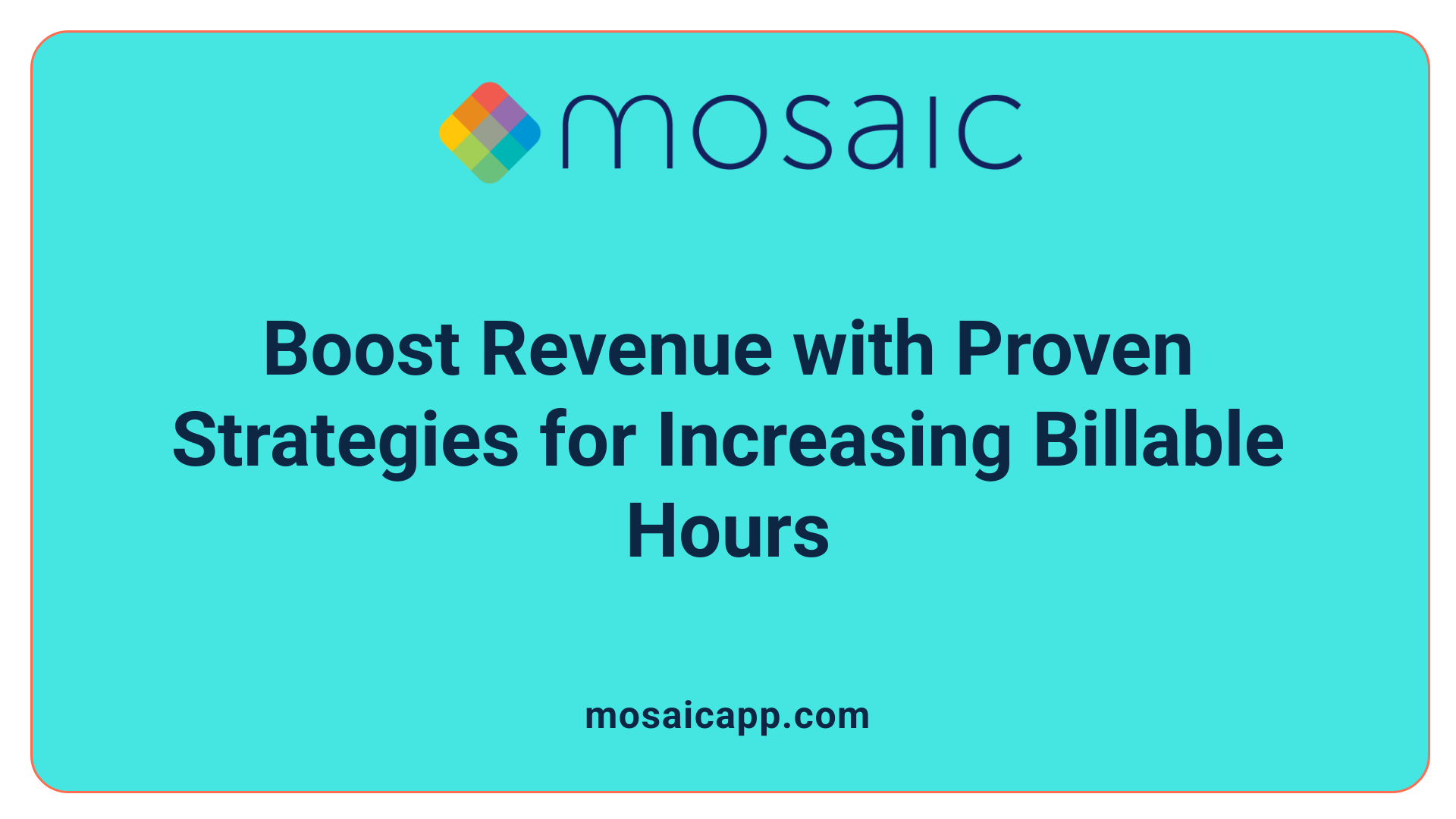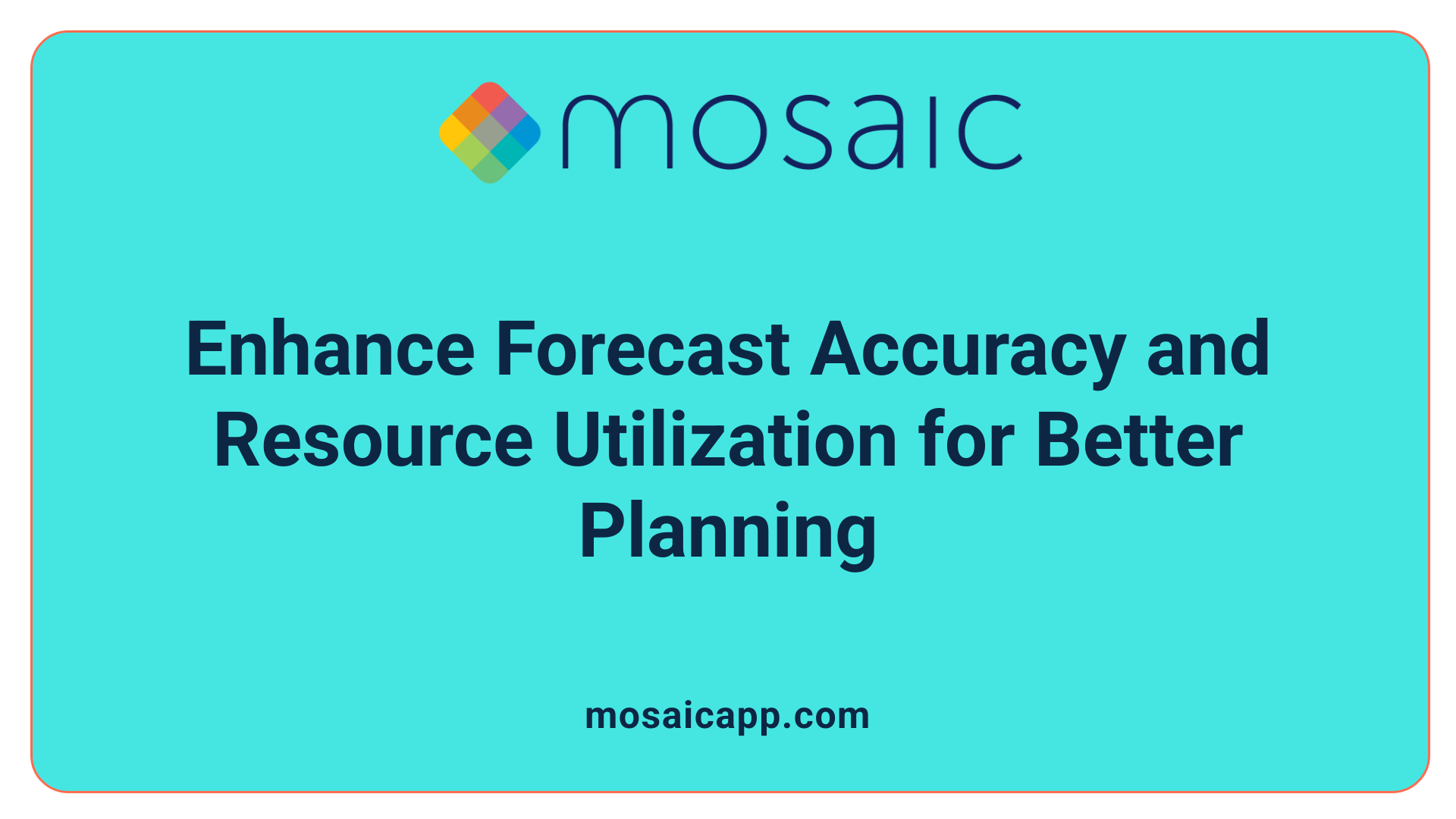Enhancing Agency profitability through strategic forecasting
Accurate forecasting of billable hours is essential for agency growth, profitability, and efficient resource management. Implementing best practices ensures organizations can estimate future workloads, optimize team productivity, and maximize revenue, all while maintaining a healthy work environment. This article explores essential techniques, technological tools, and strategic approaches to refine billable hours forecasting and achieve sustainable agency success.
Leveraging Advanced Time Tracking and Resource Planning Tools

What tools and techniques are available for resource planning and time tracking?
Effective resource planning and precise time tracking are vital for agencies aiming to optimize productivity and ensure project profitability. Modern software solutions provide a range of features to manage these aspects efficiently.
Project management tools such as Scoro, Jira, and Wrike offer capabilities like shared calendars, task management, and workload analysis. These platforms enable teams to assign tasks, monitor progress, and visualize project timelines, which helps prevent over- or under-utilization.
Specialized resource scheduling software like Float, Resource Guru, and Ganttic focus on real-time capacity insights. They provide visual scheduling interfaces, which make it easier to allocate resources appropriately and monitor utilization rates. These tools support proactive planning and help identify potential bottlenecks before they impact project delivery.
Advanced AI-powered platforms, including Saviom, Motion, and Forecast, incorporate automation and predictive analytics. These tools facilitate auto-scheduling based on historical data, forecast future resource needs, and assist in strategic workforce planning. Their intelligent features enable agencies to adapt quickly to changes and optimize resource deployment across multiple projects.
To complement software tools, many agencies utilize techniques like time audits, workload analysis, and capacity planning. Timesheets, heatmaps, and dashboards provide detailed tracking and visual reports, offering insights into how team members allocate their hours.
Integration capabilities, such as syncing time tracking data with billing and project management systems, streamline workflow and reduce manual errors. Customizable workflows and flexible reporting support comprehensive resource management, maintaining projects on schedule and within budget.
How do these tools and techniques improve overall agency efficiency?
By implementing robust resource planning and time tracking tools, agencies can accurately forecast project timelines, allocate team members effectively, and monitor utilization metrics. This leads to better decision-making, increased profitability, and healthier work-life balance for employees.
Furthermore, these systems facilitate transparency, enabling managers and clients to understand resource allocation and project progress clearly. Regular data analysis identifies inefficiencies and guides continuous process improvements.
In summary, the combination of specialized software solutions and strategic techniques ensures that agencies can manage their resources with precision, ultimately delivering projects more efficiently and boosting client satisfaction.
The Significance of Precise Tracking in Agency Profitability

How does effective billable hours management contribute to agency profitability?
Managing billable hours effectively plays a pivotal role in increasing an agencyâs profitability. When agencies accurately track every minute spent on billable tasks, they can ensure precise billing, reducing revenue leakage. This meticulous approach helps in invoicing clients correctly and promptly, leading to improved cash flow.
Accurate time records also enable agencies to monitor realization ratesâthe percentage of billable hours that are successfully billedâand manage issues like write-offs and collections more efficiently. Transparency with clients about how hours are allocated fosters trust and minimizes disputes.
Furthermore, tracking both billable and non-billable activities reveals inefficiencies and areas for improvement. By identifying non-billable time that can be minimized or optimized, agencies can allocate resources more effectively, focusing on high-value work. Overall, diligent management of billable hours supports sustainable growth by maximizing revenue, optimizing resource utilization, and improving operational efficiency.
Use of software like TimeCamp for automation and reporting
Implementing specialized software such as TimeCamp streamlines the process of tracking billable hours. These tools automate time registration, eliminating manual errors and saving valuable administrative time.
TimeCamp and similar platforms offer real-time data capture, which provides managers with immediate insight into how team members are spending their hours. Automated reports help evaluate project profitability, resource utilization, and overall efficiency.
The softwareâs automation features, including auto-logging and AI-powered tracking, ensure comprehensive data collection. Integration with project management and invoicing systems simplifies billing, reduces discrepancies, and accelerates revenue collection.
Ensuring data integrity through task and project attribute assignment
Accurately attributing hours to the right projects and tasks is essential for sound financial management. Agencies should establish clear criteria for what constitutes billable work, considering that not all activities directly generate revenue.
Assigning the billable attribute to projects and individual tasks ensures data consistency and reliability. Implementing controls to prevent misclassification helps maintain data integrity.
For agencies seeking revenue forecasts, attaching dollar amounts or bill rates to billable tasks allows projection of future income. Properly categorized and tracked data supports better workload distribution, pricing strategies, and client billing accuracy.
How does effective billable hours management contribute to agency profitability?
In summary, precise management of billable hours through proper tracking, automation, and data integrity directly influences an agencyâs ability to invoice accurately, control costs, and identify growth opportunities. These practices build a stronger foundation for increasing profitability, maintaining healthy cash flow, and supporting long-term sustainability.
Strategies to Track, Manage, and Increase Billable Hours Effectively

What strategies can be used for tracking, managing, and increasing billable hours effectively?
Accurate tracking of billable hours is vital for agencies aiming to improve efficiency and profitability. Using dedicated practice management and time-tracking software, such as TimeCamp, Toggl Track, or Harvest, helps in recording all billable activities immediately and accurately. These tools often feature automatic tracking, integrations with project management systems, and reporting capabilities that streamline the process.
Implementing clear billing policies and detailed task descriptions enhances transparency and reduces client disputes. Policies should define what constitutes billable work, set billing cycles, and specify how to log hours accurately. Descriptive entries for each task not only facilitate precise invoicing but also provide valuable insights for future planning.
Strategies to increase billable hours include batching similar tasks together to minimize context switching, automating repetitive tasks with tools like Forecast, and reducing time spent in non-essential meetings. Communicating proactively with clients to clarify priorities and align expectations further helps in maximizing productive engagement.
Regular performance monitoring through key metrics, like billable utilization rates, combined with periodic time audits, can reveal inefficiencies and areas for improvement. Setting realistic daily and monthly targets encourages accountability. Exploring alternative billing models, such as flat fees or value-based pricing, may also unlock additional revenue streams.
Incorporating these practices creates a structured environment that fosters consistent growth in billable hours while maintaining quality and employee wellbeing.
Forecasting Techniques and Industry Standards
What methods and industry standards are effective for forecasting billable hours?
Forecasting future billable hours accurately is essential for agency profitability and smooth project execution. A blend of analytical methods, technological innovations, and adherence to industry standards can significantly improve forecasting precision.
One foundational approach is analyzing historical data from past projects. This helps identify patterns, average work hours, and seasonal variations that influence future workloads. Combining this with statistical modeling techniques, such as regression analysis or trend forecasting, allows agencies to project a more realistic estimate of upcoming billable hours.
Industry benchmarks also serve as valuable reference points. These benchmarks provide standards on utilization rates, average billable hours per employee, and productivity expectations within specific sectors. Aligning internal targets with industry standards ensures that agencies set achievable goals while remaining competitive.
Modern resource management software, such as Toggl Track, Clockify, and Harvest, enhances tracking accuracy through automation. These tools support detailed, real-time data collection, reducing manual errors and offering instant access to current utilization metrics. Their integration with project management and billing systems streamlines workflow and provides comprehensive insights.
Training employees in proper time-tracking practices is another vital component. Clear guidelines on how to record work hours, setting well-defined project scopes, and emphasizing the importance of accuracy foster better data collection. This, combined with automationâlike AI-powered auto-logging of activitiesâfurther reduces administrative burdens and enhances data quality.
Implementing automation tools assists in administrative tasks such as data entry, reminders for time logging, and generating forecasts based on live data. These efficiencies help agencies react swiftly to project changes, reallocate resources as needed, and maintain optimal utilization.
Finally, integrating these forecasting methods within established industry standards ensures consistent, reliable, and transparent processes. This integration enhances project profitability, improves client transparency, and allows for more strategic resource planning.
| Method/Tool | Description | Industry Standard Reference |
|---|---|---|
| Historical Data Analysis | Examining past project hours to identify patterns | Usually aligns with ISO standards on project management |
| Statistical Modeling | Applying regression or trend analysis for predictions | PMI guidelines recommend data-driven forecasting |
| Real-Time Tracking Software | Tools like Toggl, Clockify providing live data | Best practices endorsed by project management authorities |
| Employee Training | Educating staff on precise time recording | Industry-wide emphasis on accuracy for billing purposes |
| Automation Tools | AI-powered auto-logging, reminders | Growing adoption across agencies for efficiency |
Understanding and applying these methods ensures agencies can forecast billable hours more accurately, leading to better resource management, higher profitability, and improved client relationships.
Refining Forecasts and Managing Resource Utilization

How can agencies improve accuracy and efficiency in predicting billable hours?
Agencies aiming to improve their predictions of billable hours should leverage advanced, automated forecasting tools. These tools can process complex variables such as multiple subscription tiers, discounts, deferrals, and project scopes, leading to more precise forecasts.
Implementing clear definitions of what constitutes billable work within the organization ensures consistency across projects and team members. Attaching revenue estimates or bill rates to specific work tasks further enhances the relevance of forecasts by translating hours into potential income.
Reliable data collection plays a crucial role. Using time-tracking software like TimeCamp, Toggl Track, or Harvest helps in accurately recording billable and non-billable hours, minimizing manual errors and providing dependable inputs for forecasting.
Regular review and updates of forecasts are essential. By assessing real-time data and incorporating multiple forecasting methodologies, agencies can adjust their predictions to reflect changing workload realities. This dynamic approach maintains forecast accuracy over time.
Moreover, setting appropriate resource utilization targetsâsuch as aiming for 70-80% of logged hours being billableâcan help avoid over- or under-utilization. Balancing billable work with necessary non-billable tasks ensures sustainable productivity without risking employee burnout.
How can agencies improve accuracy and efficiency in predicting billable hours?
The use of automation is central to refining forecast accuracy. Automating complex calculations related to revenue, discounts, and project-specific variables streamlines the process and reduces human error.
Establishing well-defined criteria for billable work and utilizing detailed billing descriptions help ensure the forecast aligns closely with actual invoicing, contributing to more predictable revenue streams.
Data integrity is criticalâautomated, integrated time-tracking combined with project management and billing software provides comprehensive, real-time insights into time logged against specific tasks and projects.
Furthermore, periodic analysis of historical dataâsuch as comparing forecasted versus actual hoursâuncovers patterns that can inform future predictions. This continuous learning process improves the reliability of forecasts.
Resource utilization targets are also fundamental. Monitoring utilization rates regularly enables agencies to identify under or over-utilization, prompting adjustments in staffing or workflow to maintain efficiency and prevent burnout.
In essence, a combination of integrated tools, clear standards, continuous review, and strategic resource planning forms the backbone of more accurate, efficient billable hour predictions.
Implementing and Refining Forecasting Processes
What are some best practices for implementing and refining billable hours forecasting?
Effective forecasting of billable hours starts with establishing clear definitions of what constitutes billable work within the organization. This clarity helps team members accurately log time against appropriate activities, reducing errors and ensuring precise data collection. Utilizing reliable automation tools such as Forecast, Toggl Track, or Float can significantly streamline this process. These tools facilitate automatic time logging, minimize manual entry errors, and generate detailed reports that make tracking progress easier.
Regular review sessions are crucial in refining forecasting accuracy. By comparing projected hours with actual logged time, agencies can identify discrepancies and adjust their estimation techniques accordingly. This iterative process leads to more accurate future forecasts, optimizing resource allocation and project planning.
Encouraging team focus is also vital. Techniques like time blocking, reducing unnecessary meetings, and batching similar tasks together can help maximize billable hours. These practices eliminate distractions and promote productivity.
Training staff on proper time tracking procedures and communicating the importance of accurate data entry foster a culture of accountability. When everyone understands the role of precise logging, data quality improves, and forecasting becomes more reliable.
Finally, employing strategic measures such as retainer agreements and upselling additional services helps stabilize revenue streams. Automating repetitive administrative tasks reduces overhead costs and allows teams to dedicate more time to billable work. By adhering to these practices, agencies can continuously improve their forecasting processes, leading to increased profitability and better client service.
How can agencies leverage technology to improve billable hours forecasting?
Technology plays a pivotal role in enhancing the accuracy and efficiency of billable hours forecasting. Automation toolsâlike Forecast, Toggl Track, and Floatâintegrate seamlessly with project management and invoicing systems. Such integration ensures real-time data synchronization, reducing manual input and errors.
AI-powered auto-logging features can automatically detect and record billable activities, freeing up staff from manual entries and increasing precision. Dashboards and analytics offered by these platforms provide instant insights into resource capacity, utilization rates, and project profitability, facilitating dynamic adjustments.
Using historical data collected over time also helps in identifying patterns, seasonal fluctuations, and productivity trends. This data informs better assignment planning, scope management, and pricing strategies.
Moreover, automated alerts and reminders for time logging encourage more consistent and timely entries, minimizing overlooked billable hours. Overall, continuous technological enhancement supports agencies in refining their forecasting accuracy, optimizing resource utilization, and increasing overall firm profitability.
Maintaining a Balance and Setting Utilization Targets for Optimal Results
How can agencies improve accuracy and efficiency in predicting billable hours?
Agencies aiming for precise forecasting must leverage advanced, automated tools that consider complex factors like subscription tiers, discounts, and deferrals. These tools help automate calculations and provide real-time insights, reducing manual errors and saving time.
A clear definition of what counts as billable work is critical. When tasks are accurately classified, and revenue estimates are attached, forecasts become more meaningful and reliable.
Utilizing reliable data from time-tracking software is essential. These tools capture actual work hours accurately, offering a solid foundation for predictions.
Regular review and updates of forecasts are necessary. Incorporating multiple data points and applying varied forecasting methods ensure forecasts stay relevant and adapt to changing project scopes.
Setting resource utilization targets is vital. These benchmarksâsuch as aiming for 70-80% of logged hours to be billableâhelp guide workload distribution and ensure staff are neither under nor overutilized.
Monitoring non-billable hours and adjusting workload
While focusing on billable hours, agencies should keep close track of non-billable activities like internal meetings, training, or administrative tasks. These are necessary but should be balanced against billable work to prevent overloading staff.
Adjusting workloads involves reallocating tasks and streamlining processes, ensuring team members spend optimal time on revenue-generating activities. Encouraging staff to record all hours precisely helps identify non-billable work and areas for operational improvement.
Setting resource utilization targets
Resource utilization targets act as performance indicators. Typical goals suggest that about 70% to 80% of available hours should be billableâleaving room for non-billable activities like meetings, training, or breaks.
These targets vary, depending on company size, project complexity, and strategic goals. They serve as a benchmark to evaluate productivity and drive strategic planning.
Using detailed reports from time-tracking and project management software, agencies can monitor progress against these targets, identify underutilized or overburdened staff, and adjust accordingly.
Preventing burnout and overutilization
Overreaching on billable hours can risk employee burnout, leading to decreased productivity and higher turnover. Establishing clear limits and encouraging a healthy work-life balance is crucial.
Strategies include setting realistic workload expectations, ensuring adequate downtime, and fostering open communication about capacity. Automated tools can flag overutilization, providing early warnings.
Undervaluing non-billable activities causes missed opportunities for efficiency and skill development. Recognizing and allocating time for internal growth helps sustain long-term productivity.
Related factors to optimize agency performance
| Aspect | Description | Impact |
|---|---|---|
| Time Tracking Tools | Essential for capturing accurate hours | Better forecasting, billing, and resource management |
| Data Analysis | Reviewing time logs helps identify inefficiencies | Continuous process improvement |
| Workflow Efficiency | Minimizing distractions, automating tasks | Increased billable time |
| Employee Engagement | Providing clear goals and feedback | Higher morale and productivity |
| Billing and Pricing Models | Using flexible models to maximize revenue | Improved profitability |
Achieving a sustainable balance between billable and non-billable hours involves continuous monitoring and proactive adjustments.
By setting clear utilization targets, leveraging automation, and encouraging transparent communication, agencies can enhance efficiency, prevent burnout, and maximize profitability. Maintaining this balance is an ongoing process demanding regular review and strategic planning to adapt to changing workloads and business goals.
Conclusion: Strategy for Continuous Improvement and Growth
To sustain growth and maximize agency profitability, implementing a strategy of continuous improvement is vital. Regularly reviewing billable hour tracking processes ensures that data collection remains accurate and actionable. This ongoing evaluation helps identify bottlenecks and inefficiencies, allowing for timely process adjustments.
Consistently analyzing collected data enables agencies to refine their resource allocation, improve forecasting accuracy, and enhance project planning. For instance, recognizing trends in billable versus non-billable hours can highlight areas to automate or delegate, boosting overall efficiency.
Adapting forecasting models to reflect project scope changes, seasonal fluctuations, or team capacity variations ensures that predictions remain reliable. This flexibility supports better decision-making and resource management.
Balancing productivity with employee well-being is crucial for sustainable success. Setting realistic utilization targets prevents burnout and maintains a motivated team. Regularly reviewing workload, providing transparent communication, and leveraging automation tools contribute to this healthy balance.
By embracing a cycle of continuous review, analysis, and adaptation, agencies can enhance their operational effectiveness, increase profitability, and foster a positive work environment for long-term growth.
Fostering a Culture of Accurate Time Logging and Continuous Refinement
Training staff on time logging best practices
Implementing comprehensive training sessions helps ensure all team members understand the importance of accurate time logging. Educate staff on differentiating between billable and non-billable hours, how to record detailed descriptions, and the use of time-tracking tools like TimeCamp, Toggl Track, or Clockify. Regular refreshers and updates on best practices keep everyone aligned.
Encouraging accountability and transparency
Foster an environment where transparency is valued, and employees feel responsible for their time entries. Setting clear expectations and monitoring logs encourages team members to log their hours diligently. Providing access to dashboards and reports enhances visibility, promoting accountability.
Using data for iterative process improvements
Leverage the collected time-tracking data to identify workflow inefficiencies and areas for growth. Analyze trends, such as underutilized resources or frequent non-billable activities, and implement targeted improvements. Regular reviews of this data facilitate continuous refinement of processes and resource allocation.
Building a culture of precision and accountability
Create a workplace culture that prizes accuracy in time tracking as a vital part of project success and profitability. Recognize and reward consistent, precise logging habits. Encourage open dialogue about challenges faced in accurate tracking and provide support to overcome barriers, ultimately cultivating a disciplined, responsible approach across teams.
Continuous Refinement for Optimal Forecasting Success
Achieving precise and dependable billable hours forecasting is a continuous journey that requires diligent effort, technological support, and a culture of accountability. Agencies must regularly analyze their data, refine their processes, and stay adaptable to changing project landscapes to maximize profitability and efficiency. By fostering transparency, encouraging ongoing staff training, and leveraging automated tools, organizations can maintain accurate forecasts that truly reflect their operational realities. This ongoing commitment to improvement ensures that agencies are well-positioned to meet financial goals, satisfy client expectations, and sustain long-term growth.

